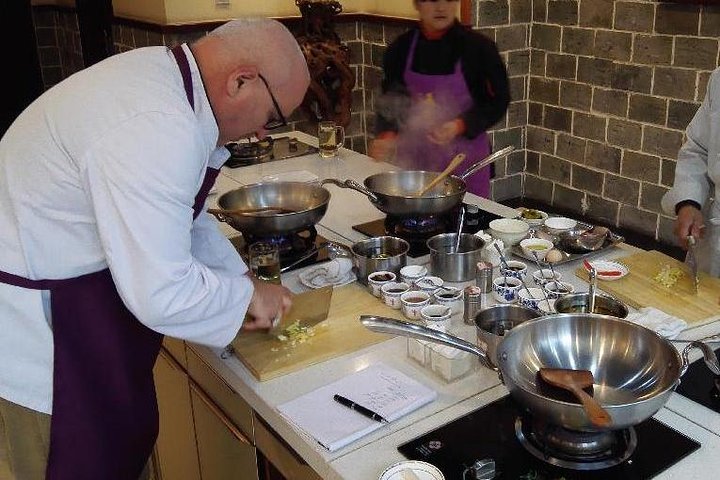Savoring Sichuan: A Culinary Adventure at the Sichuan Cuisine Museum
Drawn by the allure of Sichuan’s rich culinary heritage, I embarked on a journey to the Sichuan Cuisine Museum. This immersive experience promised not only a taste of traditional dishes but a deep dive into the cultural and historical roots of this vibrant cuisine.
A Culinary Journey into the Heart of Sichuan
As I stepped into the Sichuan Cuisine Museum, nestled in the serene Gucheng village of Pixian county, I was immediately enveloped by the rich aromas and vibrant colors that define Sichuan cuisine. The journey began with a delightful tasting of traditional snacks, each bite offering a new layer of flavor and texture. From the spicy kick of the Sichuan-style stuffed pancake to the delicate sweetness of the northern Sichuan jelly, my taste buds were awakened to the diverse palate of this region.
Guided by a professional Chuancai expert, I wandered through the museum’s extensive collection of over 6000 cultural relics. Each artifact told a story of the evolution of Sichuan cuisine, a narrative that is deeply intertwined with the region’s history and traditions. The museum’s classical Sichuan-style garden provided a tranquil backdrop, allowing me to reflect on the cultural richness that surrounded me.
Embracing Tradition and Innovation
The next phase of the experience was a hands-on exploration of the raw ingredients that form the backbone of Chuancai. In the organic vegetable garden, I picked fresh produce, feeling a connection to the land that nourishes this cuisine. The traditional techniques of making Pixian chili bean paste were a revelation, as I learned the art of flipping, sunburning, and dewing to create this essential ingredient.
A visit to the Kitchen God Ancestral Hall was a spiritual moment, reminding me of the deep respect for food and nature that is central to Sichuan culture. Worshiping the Kitchen God, revered as the master of all Chinese chefs, was a humbling experience that underscored the importance of harmony between humans and the natural world.
Walking through the Street of Old Sichuan Cuisine Restaurants, I was transported back in time. The architecture and ambiance of these establishments captured the essence of traditional Sichuan dining, offering a glimpse into the past while celebrating the timelessness of these culinary practices.
Mastering the Art of Chuancai
The highlight of the day was undoubtedly the cooking class, where I donned a chef’s uniform and embarked on the challenge of preparing three classic Sichuan dishes. Under the guidance of a Chuancai specialist, I learned the intricate techniques of cutting, heat control, and presentation that define this cuisine. The experience was a feast for the senses, as I engaged with the vibrant colors, tantalizing aromas, and complex flavors of the dishes.
Cooking Kung Pao chicken, Mapo Tofu, and Panda steamed dumplings was both exhilarating and enlightening. The personal feedback from a nationally-renowned Top Chef was invaluable, and receiving the official certificate of ‘Master of Chuancais’ was a proud moment.
As I savored the dishes I had prepared, accompanied by traditional Chinese beverages and snacks, I felt a profound appreciation for the culinary artistry of Sichuan. The day concluded with a leisurely tea session, where I embraced the local custom of sipping tea and playing Mahjong, a fitting end to a day immersed in the cultural and culinary heritage of Sichuan.
This experience at the Sichuan Cooking Experience was not just about learning to cook; it was a journey into the heart of a culture that values tradition, innovation, and the joy of sharing food with others. It was a reminder of the power of cuisine to connect us to a place, its people, and its history.



































